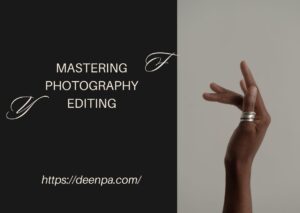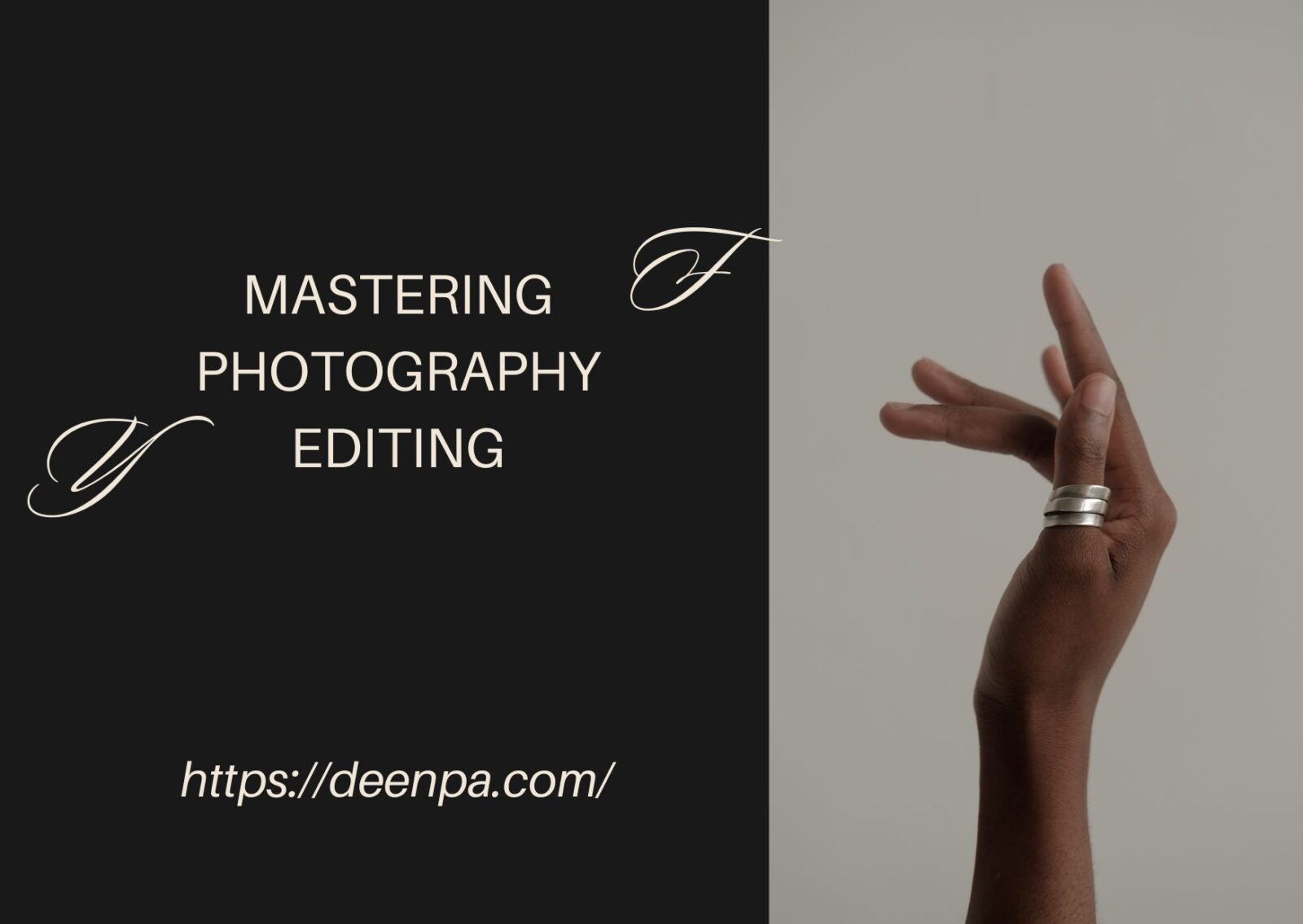Mastering Photography Editing
Mastering Photography Editing .In the realm of modern photography, capturing a stunning image is only the first step towards creating a remarkable visual story. Post-production, often referred to as photography editing, plays an equally crucial role in transforming ordinary photos into extraordinary works of art. This comprehensive guide explores the world of photography editing, unveiling a collection of essential tips and techniques to help you enhance your images and unleash your creative potential.
Photography editing is a dynamic process that empowers photographers to turn their visions into reality. By gaining proficiency in editing techniques and employing the right tools, you can elevate your photography skills to new heights.
Understanding the Art of Photography Editing
Photography editing is more than just adjusting brightness and saturation. It involves a creative process of refining, enhancing, and transforming images to match the photographer’s artistic intent. Proper editing can bring out the emotions, details, and stories captured within a photograph.
Essential Tools for Photography Editing
Image Editing Software
Selecting the right software is essential for effective photo editing. Popular choices include Adobe Lightroom and Photoshop, as well as other user-friendly options like Capture One and Luminar.
RAW Editing
Editing RAW files provides greater flexibility and control over the final image. RAW editing allows you to adjust exposure, white balance, and other settings without sacrificing image quality.
Color Correction Tools
Color correction tools enable precise adjustments to color balance and hue, helping you achieve the desired atmosphere and mood in your photos.
Mastering Key Editing Techniques
Exposure Adjustment
Balancing exposure is fundamental. Adjust the brightness, shadows, and highlights to ensure all areas of your photo are well-lit and visually appealing.
Contrast and Tone Balancing
Control the contrast and tones in your image to create depth and dimension. Balancing highlights and shadows can make your photo more engaging.
Color Grading
Color grading sets the overall tone of your image. Experiment with different color combinations to evoke specific emotions and moods.
Sharpening and Noise Reduction
Enhance details by applying sharpening techniques and reduce digital noise, especially in low-light conditions.
The Magic of Retouching and Restoration
Portrait Retouching
Smooth skin, remove blemishes, and enhance facial features while maintaining a natural look in portrait photography.
Object Removal
Eliminate distracting elements or unwanted objects from your photos to create cleaner and more focused compositions.
Photo Restoration
Restore old or damaged photos by repairing tears, scratches, and faded colors, preserving cherished memories for future generations.
Advanced Editing Approaches
Dodging and Burning
Fine-tune lighting and shadows in specific areas to add depth and emphasize key elements.
Frequency Separation
Achieve smooth skin tones and textures in portraits by separating frequency levels of an image.
HDR Blending
Combine multiple exposures of the same scene to capture a wider range of details and tones, especially in high-contrast situations.
Workflow and Efficiency Tips
Batch Editing
Save time by applying similar edits to multiple photos simultaneously, maintaining consistency in your collections.
Presets and Templates
Create and utilize presets to streamline your editing process and maintain a consistent style across your work.
Keyboard Shortcuts
Mastering keyboard shortcuts for your editing software can significantly speed up your workflow and boost efficiency.
Maintaining a Consistent Style
Creating a Signature Look
Develop a unique editing style that becomes your visual identity, setting your work apart from others.
Using Presets Wisely
While presets can be a great starting point, make sure to customize them to suit each photo’s individual characteristics.
Showcasing Your Edited Work
Social Media Platforms
Share your edited photos on platforms like Instagram and Facebook to showcase your skills and connect with a broader audience.
Online Portfolios
Create a personal website or portfolio to present your best-edited works and provide potential clients with a comprehensive view of your abilities.
Ethics of Photography Editing
Maintain ethical standards in your editing process. Avoid altering photos to the point where they misrepresent reality or deceive viewers.
Conclusion
Photography editing is an art form that can transform an ordinary image into a masterpiece. By mastering the essential tools, techniques, and approaches outlined in this guide, you can take your photography to new heights, turning your creative visions into captivating visual stories that resonate with viewers.
FAQs
- Can I edit photos taken on a smartphone? Absolutely. Many editing techniques apply to smartphone photos as well. There are numerous editing apps available for mobile devices.
- Is it better to edit in RAW or JPEG format? Editing in RAW format provides more flexibility and control, as it retains more image data compared to JPEG.
- How do I learn photography editing? Online tutorials, courses, and practice are excellent ways to learn photography editing. Experimentation and practice will help you develop your skills.
- Should I always aim for a natural look when editing portraits? While natural looks are often preferred, creative edits that enhance mood and style can also produce stunning results.
- What’s the difference between color correction and color grading? Color correction involves adjusting colors to achieve a balanced and accurate representation. Color grading focuses on creating a specific mood or atmosphere through color manipulation.

